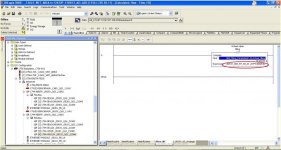Understand how pulses from a flowmeter using HSC work with CLX
- Thread starter dingomex3
- Start date
Similar Topics
I have been reading everything I can find on the P_LLS the last 2 days but I am still having trouble understanding how the P_LLS swaps beyond 2...
Hello Guys,
I have been trying to study a Machine that have Omron 3g3mv VFDs that is controlled by CJ1m CPU and SCU41-V1 communication card.
The...
On the laser displacement sensor now connected to my PLC, the manual says 4mA=643 and 20mA=64,877.
However, I checked with a Fluke, injecting...
I'm from a Mitsubishi Q-series background so excuse my ignorance. In Mitsubishi world, in my experience your Mbits (booleans) are just M1, M2...
Good Evening ,
I purchased an Avery Weigh-Tronix - ZM301-SD1 to weigh a tote.
The loadcell is a FLS -250. Below is the color code and...





